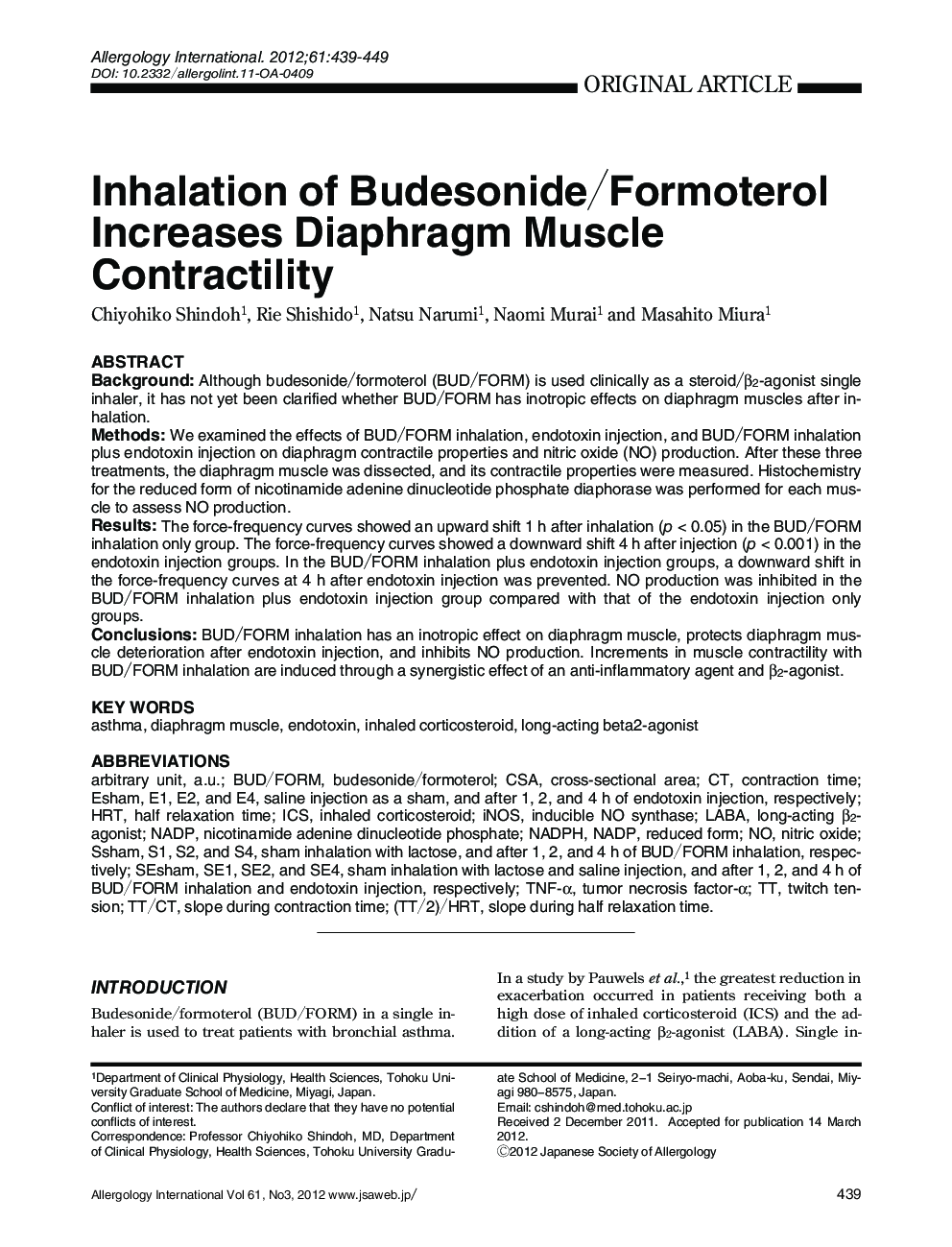| Article ID | Journal | Published Year | Pages | File Type |
|---|---|---|---|---|
| 3340764 | Allergology International | 2012 | 11 Pages |
ABSTRACTBackgroundAlthough budesonide/formoterol (BUD/FORM) is used clinically as a steroid/2-agonist single inhaler, it has not yet been clarified whether BUD/FORM has inotropic effects on diaphragm muscles after inhalation.MethodsWe examined the effects of BUD/FORM inhalation, endotoxin injection, and BUD/FORM inhalation plus endotoxin injection on diaphragm contractile properties and nitric oxide (NO) production. After these three treatments, the diaphragm muscle was dissected, and its contractile properties were measured. Histochemistry for the reduced form of nicotinamide adenine dinucleotide phosphate diaphorase was performed for each muscle to assess NO production.ResultsThe force-frequency curves showed an upward shift 1 h after inhalation (p < 0.05) in the BUD/FORM inhalation only group. The force-frequency curves showed a downward shift 4 h after injection (p < 0.001) in the endotoxin injection groups. In the BUD/FORM inhalation plus endotoxin injection groups, a downward shift in the force-frequency curves at 4 h after endotoxin injection was prevented. NO production was inhibited in the BUD/FORM inhalation plus endotoxin injection group compared with that of the endotoxin injection only groups.ConclusionsBUD/FORM inhalation has an inotropic effect on diaphragm muscle, protects diaphragm muscle deterioration after endotoxin injection, and inhibits NO production. Increments in muscle contractility with BUD/FORM inhalation are induced through a synergistic effect of an anti-inflammatory agent and 02-agonist.
